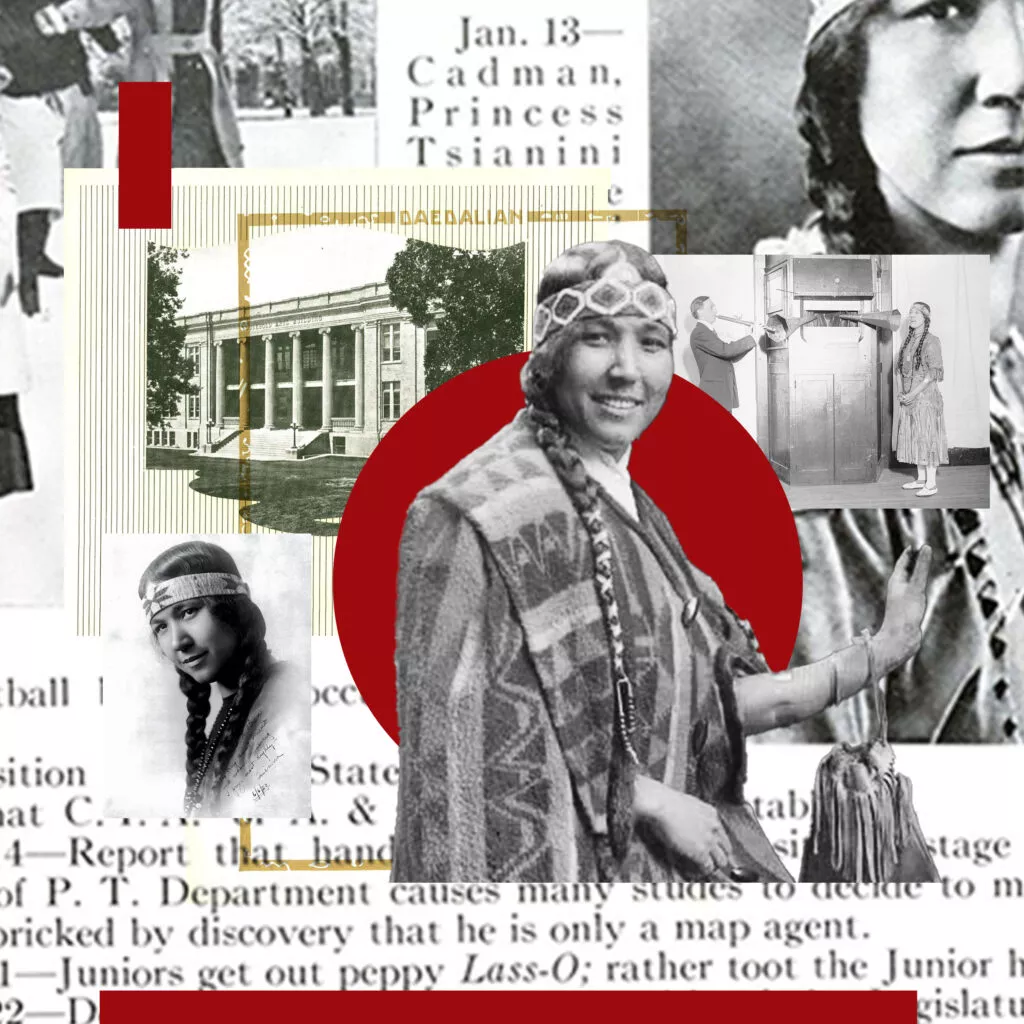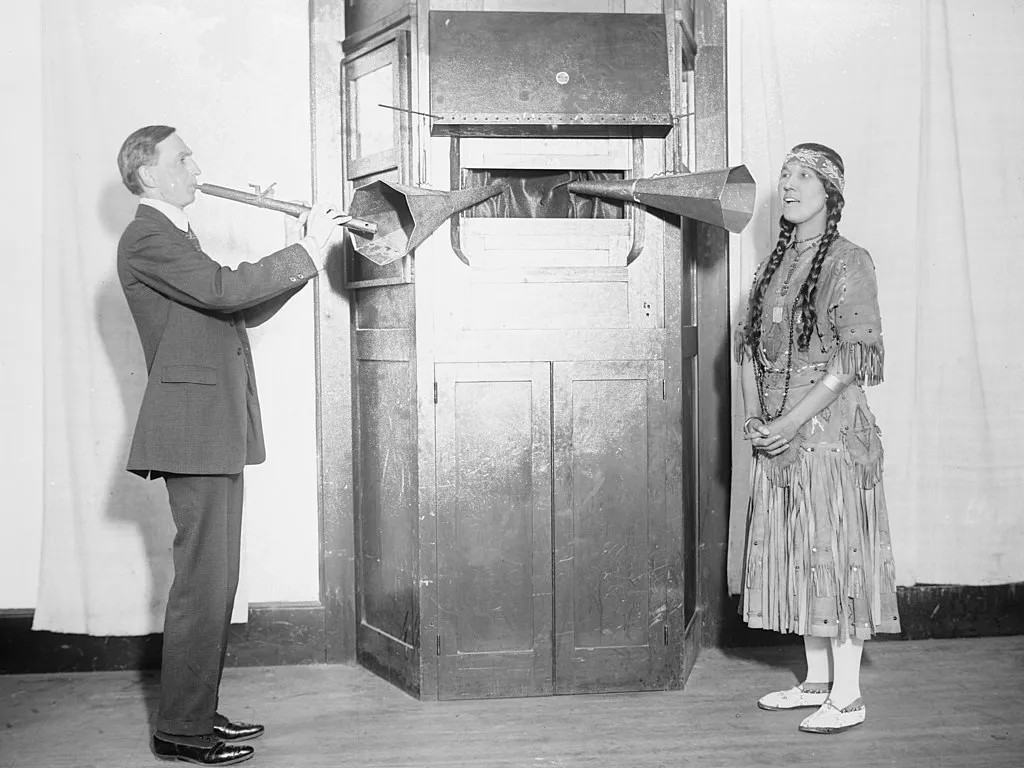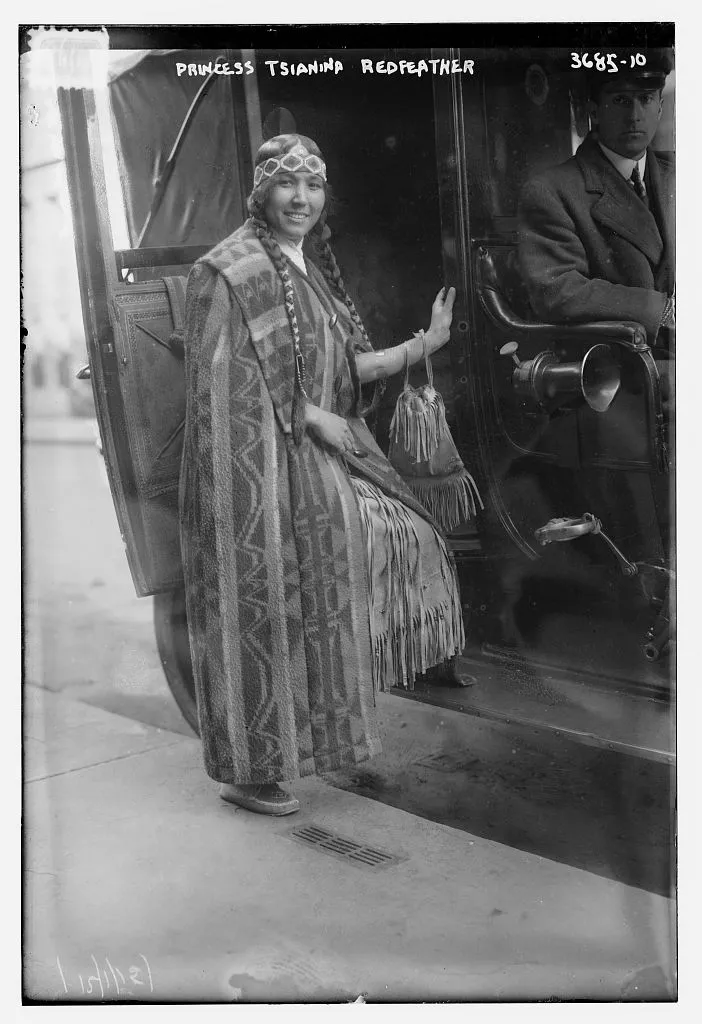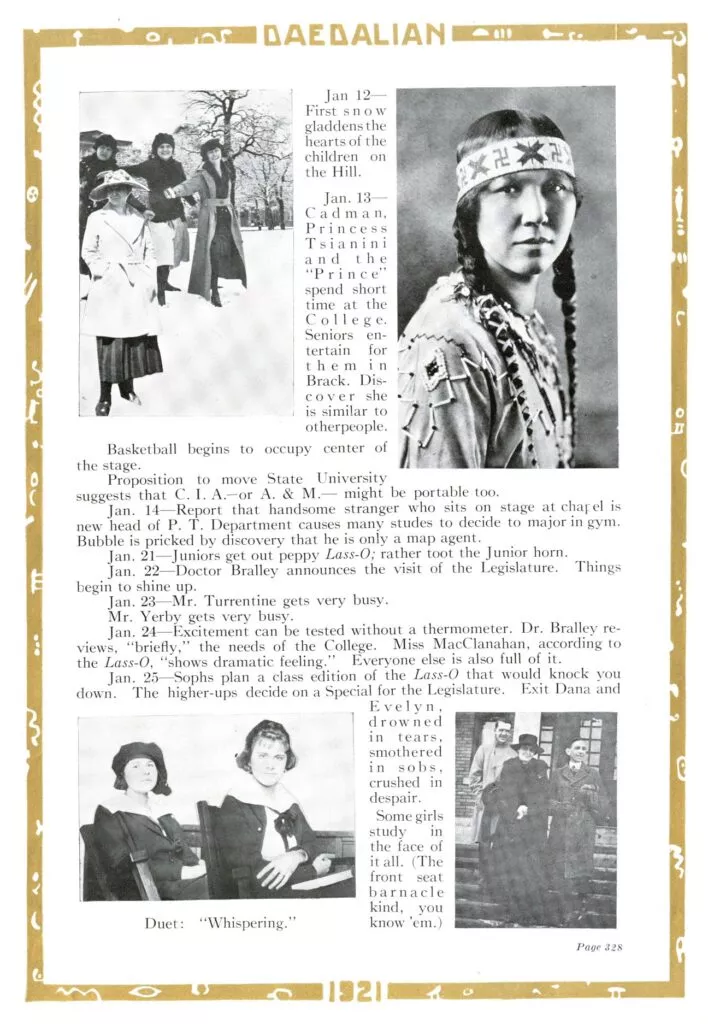Revisiting 1921, when the country’s most famous Native American singer visited TWU

This Thanksgiving season the Pioneer Alumni Association is exploring the surprising history and legacy of Tsianina Redfeather Blackstone, a Native American singer, performer, and activist who visited TWU way back in 1921. Are you a Native/Indigenous American TWU alumni? Reach out! We’d love to hear from you!
By the time Tsianina Redfeather Blackstone arrived at TWU in January of 1921, she was one of the most popular performers on what was known as the “Circuit Chautauqua” in the United States. A classically trained virtuoso, long before arriving in Denton she had already played with most of the major symphony orchestras in the country, created her own semi-autobiographical opera (which premiered to rave reviews at The Met in New York City), and entertained American troops during World War I, where she was the first woman to reach US troops in Germany. So what brought this “Princess” to TWU?

It’s hard to say specifically who invited Blackstone to TWU, but culturally, there are many clues. According to an article in the Journal of American Pop Culture, at the turn of the century, as tensions built to the beginning of World War I, Americans became weary of foreigners, especially Europeans. Native American culture, however, was seen as something both uniquely American and still foreign to white audiences, which sparked what scholars have called “the Indian craze.” Native American art, including baskets, quilts, bowls suddenly became trendy. This craze expanded across to music as well, with American musical composers rejecting Euro-centric modes of composition and utilizing more Native American musical modes and techniques.
The Circuit Chautauqua was a way for entrepreneurial performers and businessmen to make money off of the craze. The circuit featured a variety of Native American performers including bands, ensembles, plays, films and more. Native Americans of course were featured in the Circuit, but other performers whose ethnicity were ambiguous (intentionally or not) were also part of the Circuit.
Blackstone, who was born Tsianina Evans in Muscogee Nation or what is now known as Oklahoma, just happened to be a girl with an incredible gift and was in the right place at the right time to take advantage of the craze.

After showing tremendous talent as a child at a Government Indian School, officials suggested she move off the reservation to pursue her skills. Her training began at age 14 in New York City and Denver, where she became a mezzo-soprano virtuoso. It was there, in Denver, where she later met Charles Wakefield Cadman, a white composer interested in writing “Indianist” music.
In 1908, when Blackstone was 26, the two had an act ready to tour. She performed Cadman’s music in what some might call a faux-Indian costume, including long braids along with beaded and fringe garb and began to call herself “Princess” even though there is no evidence that her family held any leadership roles in the community. The name and costumes were all meant to meet the cliched expectations of the audiences in the Circuit Chautauqua, amplifying her “exotic” heritage.
She took advantage of “an opportunity to make a living, to live off of reserve, to see the world, to have conversations with people,” actor Marion Newman (who portrayed Blackstone in a play about her life) told The Regina Leader Post. “And so she did what was popular and continued to figure out ways of making that OK for herself in order to have some independence.”
And it worked. The duo traveled the world, performing across the country, in European capitals, and in 1918 co-created Shanewis, an opera loosely based on Blackstone’s life, which played for an unheard of two seasons at The Met in 1918 and 1919.

Two years later, Blackstone visited TWU on January 13, 1921. There is little information on who invited the duo or whether they actually performed, but a picture in the 1921 edition of the Daedalian shows Blackstone with a caption that says the duo spent a short time on campus and that seniors entertained them in Brackenridge Hall. The caption misspells her name as “Princess Tsianini” and ends by saying students discover she is similar to other people,” perhaps highlighting how difficult it was for Blackstone to thread the needle of being a “Princess” in a world that did not yet fully understand or appreciate Native Americans.
Blackstone eventually retired from singing in 1935 and focused the rest of her life on being an activist for American Indians, as one of the founders of the American Indian Education Foundation and manager of the School of American Research in Santa Fe. She lived to be 102 and died on January 10, 1985, almost exactly 64 years after she graced the halls of TWU.
Alumni family, did a relative or someone ever tell you about seeing Princess Tsianina at TWU? We’d love to hear about it. Send us a message at info@pioneeralumniassociation.org.
